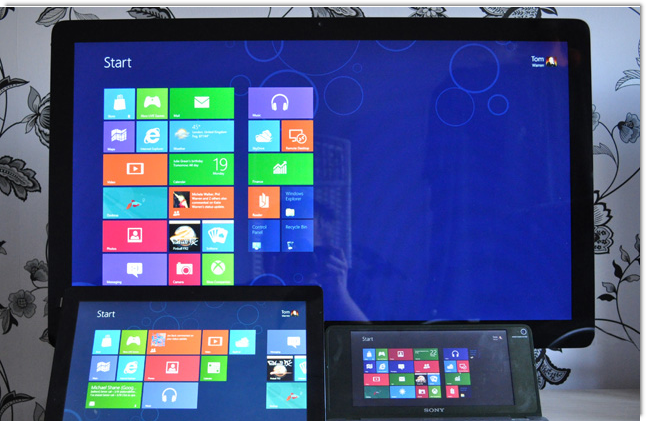Yahoo is not out from the Internet search game! The Internet company has just announced the launch of a new mobile browser and search tool called “Yahoo Axis”. Launching initially as an application for iPhone and iPad, Axis comes with a range of new browsing features. Yahoo is also offering same browsing features as a plug-in for the major desktop Web browsers – Chrome, Internet Explorer, Firefox and Safari – having HTML-5 graphic capabilities. Yahoo plans to roll out Yahoo Axis for other mobile platforms soon. Users can download the new Yahoo Axis from Apple's App Store.
Yahoo Axis, like any other search utility, you have to start with a search box. While typing your query, you will get suggested search queries dropping down – similar to Google search. But then what appears is not the traditional blue links, but a filmstrip-like view across the the top of screen, featuring large thumbnails of search result pages. To open the full page, you have to tap one thumbnails. Swipe to visit next page for search result.
Yahoo Axis also supports search for images. Yahoo has also added useful features like Pinterest integration and sharing to make using tabs even easier. “Axis is the first of its kind to challenge the status quo of the typical search and browse experience; a results page, ten blue links, clicking back and forth between links and the results page, the need to start over when you move to another device,” Yahoo says on its blog.
“Axis is the first time the search experience evolves from a destination to a companion. It’s the first search experience to provide visually rich page previews of results instantly as you type. It’s the first mobile browser that connects with any major desktop browser. Axis is the first browser to really change the game,” it adds.
Axis comes days after Microsoft announced revamping its Bing search results, deepening integration with the social media networks. Last week, Google announced a new search feature called a “Knowledge Graph” that provides more data snippets alongside its query results than the regular search engine currently provides.
Have you tried Yahoo Axis yet? If yes, share your experience with us in the comments section below:
taken from http://www.thinkdigit.com/Internet/Yahoo-launches-Axis-attempts-to-redefine-searching_9615.html
Here’s some news you probably didn’t expect to read: Yahoo just released its own Web browser. Well, sorta.
The new software, dubbed Yahoo Axis, is being called a "search browser." Its main trick is the ability to bypass the standard list of links and instead send users directly to websites and pages via thumbnails.
Axis is already available as an iPad and iPhone app. Rather than releasing its own desktop browser, however, Yahoo is offering Axis plugins for Internet Explorer, Firefox, Safari and Chrome. Once installed, the plugin appears as a search box at the bottom of the browser, expanding when a user enters a query.
CNET News reporter Rafe Needleman has been testing Axis and says it is actually good. He calls it "an aggressive product for the struggling Yahoo to launch out of its search group."
I’ve been less impressed in my brief usage of the iPhone app. The user interface is difficult to maneuver and not very intuitive for someone coming to it cold. It tries to squeeze a ton of stuff into that little screen.
The desktop plugin, which comes in the form of a search bar at the bottom of the browser, is a better experience so far, but far from perfect. Using the Axis plugin for Chrome on a Mac, the search bar has been unresponsive at times when I’ve tried to enter a query.
Yahoo’s search results have been provided by Microsoft Bing since the companies agreed to collaborate on search technology and advertising. There’s no mention of the results being powered by Bing in the Axis app, at least not that I’ve been able to find. (Msnbc is a joint venture of Microsoft and NBC Universal).
The news was apparently being held until later Wednesday night, but it leaked out thanks to an email sent by someone from Yahoo and republished by the tech site Launch.
Yahoo has been through a tumultuous couple of years, with CEO Scott Thompson recently leaving the company after a scandal over his resume.
source http://www.gadgetbox.msnbc.msn.com/technology/gadgetbox/yahoo-axis-search-browser-makes-surprise-debut-791370









.jpg)
.jpg)
.jpg)
.jpg)
.jpg)
.jpg)
.jpg)





